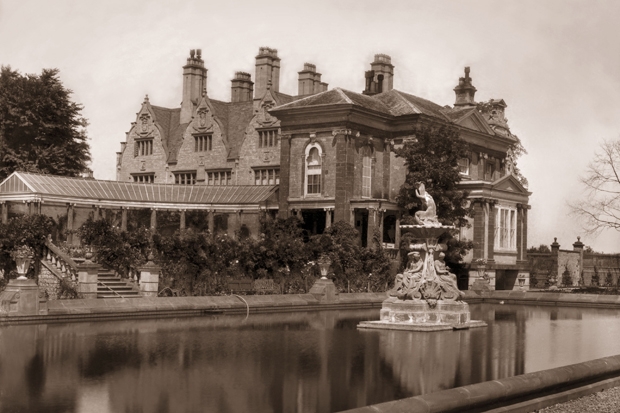When I’m not busy editing the Oldie magazine, I live near Towcester in south Northamptonshire where things are pretty unexciting. It’s at a place called Stoke Park, where two 17th-century pavilions, originally a chapel and a library linked by colonnades to the sides of a substantial country house, survived a fire that destroyed the main building in the late 19th century. It wasn’t always so dull here. In Tudor times one could have looked out across the valley of the River Tove to see Henry VIII hunting deer with Anne Boleyn. On the horizon one can still see the tower of the church at Grafton Regis where Henry used to stay and where he had his last ever meeting with Cardinal Wolsey. Stoke Park was on Crown land, which in 1629 was given by Charles I, in payment of a debt, to a courtier and entrepreneur called Sir Francis Crane, founder of the Mortlake tapestry works in London. With the assistance of the architect Inigo Jones, an admirer of Andrea Palladio, he built the pavilions that are still there today, the remnants of what is supposed to be the first example in Britain of a palladian layout — a house with two pavilions linked by colonnades to its sides.
There followed quite a lively period. Charles I stayed there in 1635, the year before Crane died, and in 1672 there was a long visit by Isaac Newton, who complained in letters to London about the inefficiency of the Towcester postal service. During the next couple of centuries Stoke Park remained the property of Crane’s descendants, and nothing much seems to have happened there until the fire of 1886 — nor indeed thereafter until it was requisitioned in the second world war for use by Canadian troops who left the place derelict. In 1953 the pavilions were bought and restored by my late uncle Robin, my father’s brother, and his partner, a Hungarian refugee from Nazism called Andrew Revai.
They were a gay couple, and Andrew was an art historian with many friends in the art world. These included Henry Moore, Graham Sutherland and John Piper, who were regular visitors, as was Anthony Blunt, whom Andrew revered but I found to be rather cold and creepy when I met him there. My wife and I liked Andrew, however, and made him godfather to our eldest daughter. He died in 1974, and my uncle used to say how lucky it was that he hadn’t lived to learn of Blunt’s treachery, for it would have broken his heart, so grateful was he to this country for giving him refuge.
But blow me down if things were not rather more interesting than I ever realised. A new biography of Guy Burgess — Stalin’s Englishman by Andrew Lownie — says that Revai had also been Burgess’s lover and had been recruited by him as a Soviet agent with the codename Taffy. As the London correspondent of a Hungarian newspaper and occasional commentator for the BBC’s Hungarian service, Revai was said to have reported back to Burgess on the doings of foreign journalists, particularly Hungarians and Swedes, which doesn’t sound very important. Nevertheless! I hasten to say that there is not the smallest suggestion that my uncle Robin was involved in any of this kind of stuff, and I feel sure that he wasn’t. I doubt if he had any idea what his lover was up to, so one might also consider him lucky to have died before the publication of Andrew Lownie’s book.
But now, as I said, there is not much excitement at Stoke Park. I feed the ducks and the chickens, drive to Towcester to shop (always having to slow down for the horses and bicyclists in which this county abounds), take the dog for the occasional walk, but not much else. Last weekend, though, things suddenly looked up. Stoke Park was used as the setting for a scene from a very low-budget film seething with sex and violence. The plot, I was told, involved a woman journalist who joined a vigilante group to track down the rapist and murderer of her daughter.
The scene filmed in one of the pavilions showed the heroine, who had arranged to meet the murderer there, getting battered by some bad guys but then being saved by the lead vigilante, who was subsequently gunned down. The man playing this unfortunate chap gave me his card, which named him as Robin Reid, an Olympic bronze medallist and thrice super-middleweight champion of the world. The garden was full of people with guns, including a man in police uniform who arrived in a proper police car. I thought at first he had come to arrest someone, possibly me, and greeted him with appropriate deference until I realised he was just another actor. There is life in the old place yet.






Comments